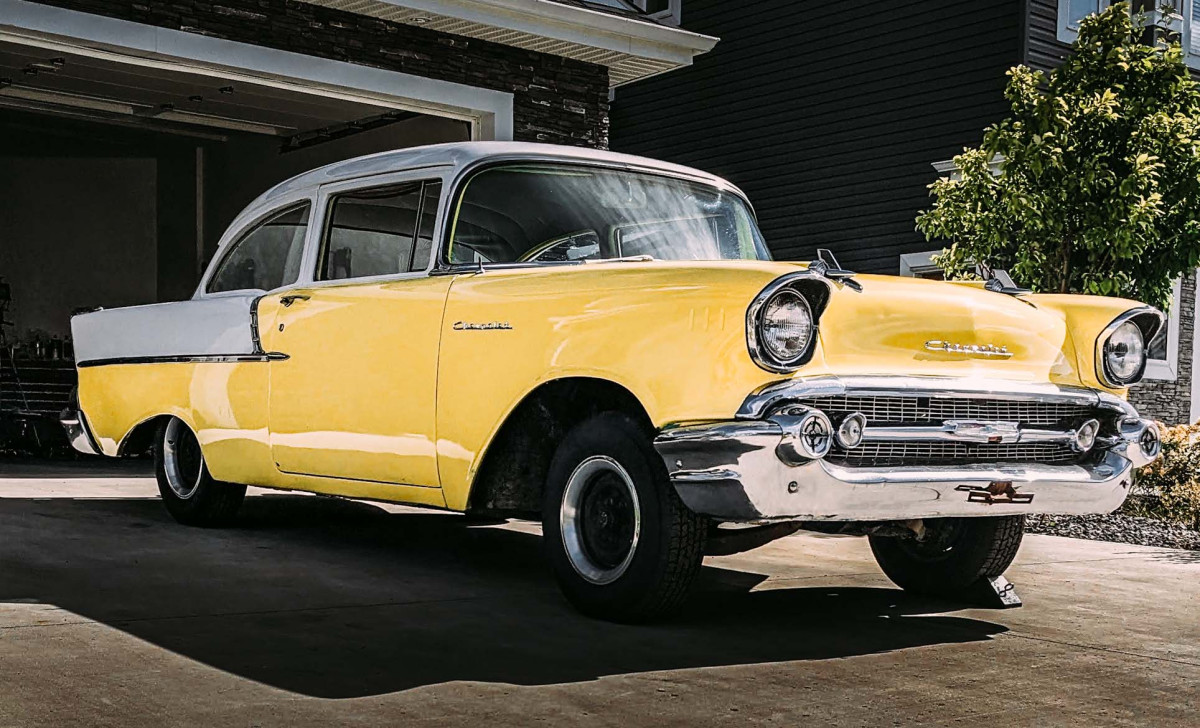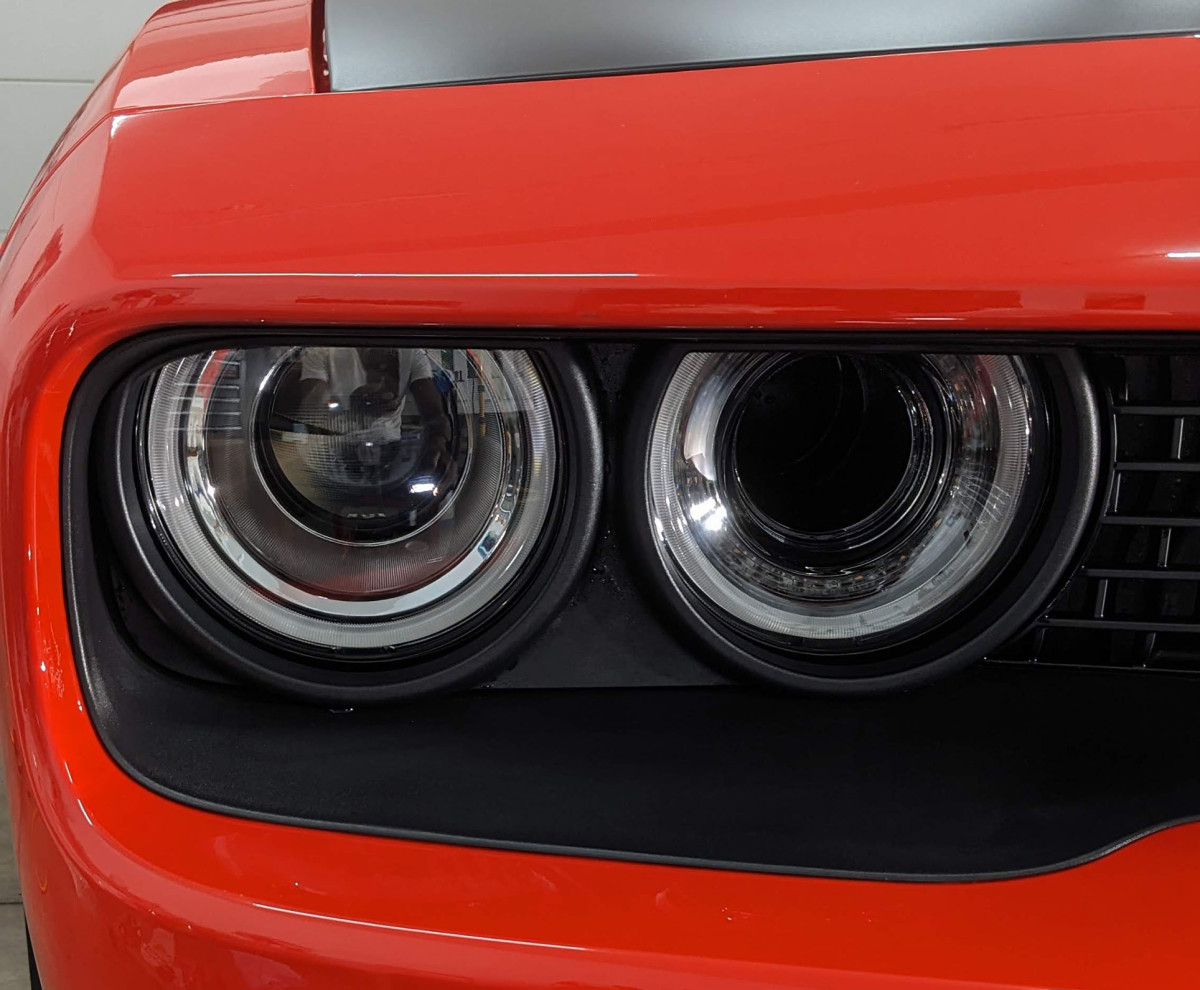

Decontamination
The two-tone paint had faded significantly, with uniform swirl marks and random deep scratches, as well as pinholes. The client's wish list included a thorough interior detailing to clean and disinfect all surfaces, restoring the dull and faded paint, minor polishing of chrome finishes, and cleaning the engine bay area.
I began the process with a multipoint decontamination wash. This involved rinsing the paint to remove loose debris and dust, followed by applying a degreaser to loosen stubborn dirt and road film. After letting the degreaser sit, I foamed the car to allow it more time to work before rinsing.
To complete the chemical decontamination, I used a Tar and Iron treatment. The Tar chemical was applied and worked in with a microfiber cloth, followed by rinsing to remove dislodged tar particles. The iron treatment followed, similarly wrapping up the chemical decontamination process. Due to the car's age and extended period of sitting unprotected, I also needed to use a mechanical clay bar treatment to remove stubborn contaminants that the chemicals couldn't remove.
For the final step of the decontamination process, I performed a two bucket hand wash using a specialized microfiber wash mitt and car soap. The car was then dried with a specialized twisted microfiber towel.

Paint Correction
When it comes to paint correction, we treat each car as unique, considering its individual characteristics and the owner's usage and maintenance habits. I conducted a multi-point inspection of the now squeaky clean paintwork, noting the types of defects in each panel and measuring the paint thickness to ensure safe detailing that meets or exceeds the client's expectations. The measurements revealed that the car had been repainted in the past. To determine the best approach for restoring the paint, I performed a test spot using various methods, such as rotary or DA machines with lambswool, microfiber, and foam pads, as well as sanding with 3000 grit paper. Ultimately, I found that a twisted wool pad on a rotary machine was the most effective in removing the faded paint and addressing swirls and scratches. Following this, I used a foam cutting pad on a DA machine with a medium cutting compound to safely remove defects and effect of the twisted wool pad in two sets of passes.

Once the cutting process was completed, I used an acrylic finishing compound to refine the paintwork and achieve a deep, reflective gloss surface. This final step removed the cutting effects and left a refined finish. I chose an acrylic product to provide a foundation of protection, considering the dehydrated paint's potential to absorb the final protection.

After correcting the exterior, I revised the process to restore the painted surfaces inside the car. The dashboard had been painted, and the interior of this iconic "Tri-star" was stylishly done, reflecting the classic styling of the 1950s. I treated the carpets and leather with dedicated products, including steam cleaning and sanitization. Additionally, I used an ozone machine to eliminate odors.


The distinct chrome accents, including the tail fins, wheel caps, door handles, and bold front grille, were hand-polished to improve their appearance. The owner had plans to refurbish some of the chrome accents.

Process
This is a higher level than our two-step paint corrects and similar to our Gabriel Detail Package with slight modifications.
- Comprehensive Decontamination Hand Wash:
- Degreaser Treatment
- Foam Bath
- Iron and Tar Treatment
- Clay Bar Treatment
- Proper Two Bucket Hand Wash
- IPA Panel Wipe
- Multi-Point Inspection
- Full Interior Detailing:
- Vacuuming
- Carpet Shampooing
- Detailed Leather Cleaning
- Steam Cleaning of All Surfaces
- Ozone Treatment for Odor Removal
- Multi-Stage Paint Correction:
- 3-Step Paint Correction to Eliminate 100% of Swirls
- Removal of the Majority of Scratches and Fading
- Achieving a Spectacular Glossy Surface
- Application of a Durable and Proven Polymer Sealant:
- Specifically Suitable for Single Stage Old Paint Systems
- Hand Polishing of All Chrome Accents
- Tire Cleaning
- Cleaning of the Engine Bay Area
- Additional Processes (not specified): light fixtures and glass were given a polish…
- All
- Decontamination
- Paint Correction
- Interior Detail











